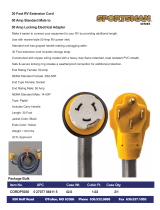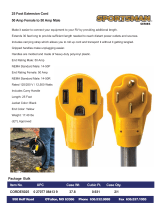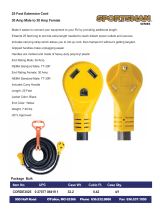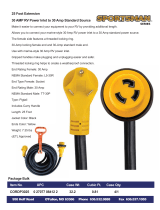
SERVICE SECTION
There’s Always Something Cooking!
Service, Parts, and Schematics
For Gas Fryers With Options
Including Built-in and UFM (Spacefighter)
Filter Systems
Covering Models 7, 12, 14, 14R, PR14,
PM14, & 18
Pitco Frialator, Inc., P.O. Box 501, Jct 1-89 & 1-93 Concord, NH 03302-0501 • 509 Route 3A, Bow, NH 03304
(800) 258-3708 • (603) 225-6684 • FAX (603) 225-8497 A
BLODGETT Company

Table of Contents (Service)
Section Title
Page
Table of Contents (Service) i-ii
List of Figures ii
Chapter 4: Service 4-1
4.1 REPLACEMENT PROCEDURES 4-1
4.11 Main Burner Removal and Replacement 4-1
4.12 Changing the Main Burner Orifice 4-1
4.13 Replacing the Heat Baffles 4-1
4.14 Pilot Burner Removal and Replacement 4-2
4.15 Pilot Orifice Replacement 4-2
4.16 Thermopile Replacement 4-2
4.17 Thermostat Replacement 4-3
4.18 Limit Control Replacement 4-3
4.19 Calibrating the KX299 Thermostat 4-4
4.2 TROUBLESHOOTING FRYERS WITH UNITROL VALVES 4-5
4.3 TROUBLESHOOTING COMPUTER CONTROLS 4-7
4.4 TROUBLESHOOTING PILOT LIGHTS 4-9
4.5 TROUBLESHOOTING ELECTRIC THERMOSTATS 4-10
4.6 TROUBLESHOOTING GO THERMOSTATS 4-11
4.7 TROUBLESHOOTING ELECTRONIC IGNITIONS 4-12
4.8 TROUBLESHOOTING BASKET LIFT PROBLEMS 4-14
4.9 TROUBLESHOOTING BUILT-IN FILTER UNITS 4-17
4.10 TROUBLESHOOTING UFM FILTER UNITS 4-20
Chapter 5: Parts 5-1
ALPHABETICAL PART LIST 5-18
NUMERICAL PART LIST 5-26
Chapter 6: Schematics 6-1
i

List of Figures and Tables
Figure No. Title Page
5-1 Outside View......................................................................................…….......................5-2
5-2 Electronic Ignition, Left Entrance Box ...............................................…......................5-3
5-3 Frame-Cabinet / Electrical Assemblies With Components ................….....................5-5
5-4 UFM Filter, Frame/Electrical Assembly ............................................….......................5-7
5-5 UFM Filter, Pick-Up/Pan Assembly ..................................................…........................5-9
5-6 UFM-A Filter, Motor / Return Assembly ...........................................…................... .5-11
5-7 Built-in Filter Pan With Components ..................................................…...................5-13
5-8 Built-in Filter Piping With Components .............................................…................... 5-15
5-9 Built-in Filter With Accessories..........................................................……..................5-17
Table No. Title Page
5-1 Built-in Filter Frame-Cabinet / Electrical Assemblies With Components ...........…5-4
5-2 UFM Filter, Frame/Electrical Assembly ................................................................….5-6
5-3 UFM Filter, Pick-Up/Pan Assembly ......................................................................…..5-8
5-4 UFM Filter, Motor / Return Assembly..................................................................….5-10
5-5
Built-in Filter Pan With Components....................................................................…5-12
5-6 Built-in Filter Piping With Components .......................................................…...….5-14
5-7 Built-in Filter With Accessories.....................................................................….....…5-16
ii

Chapter 4: Service
This chapter provides the qualified technician with the replacement and troubleshooting procedures necessary
to service the Pitco fryer.
4.1 REPLACEMENT PROCEDURES
These procedures are provided to the qualified technician as a guide to removal and replacement of various
fryer components. If a test is required to verify component operation after installation, it will be referenced.
To prevent bums, always ensure the fryer is completely SHUT DOWN and COOLED
down before working on the fryer. Do not break any fryer gas connections while the
unit is connected to a gas supply line.
The power supply must be disconnected before servicing or cleaning the appliance.
4.1.1 Main Burner Removal and Replacement
a. Loosen the set screw in the base of the burner casing.
b. Unscrew and remove the two hex head screws at the top of the burner.
c. Loosen the set screw on the air collar. Lift the burner and air collar up to clear the top of the burner
fitting. Remove the burner from the fryer.
d. To re-install the burner, reverse the procedure.
4.1.2 Changing the Main Burner Orifice
a. Unscrew the orifice with a 3/8" wrench and remove the orifice.
b. Insert the new orifice and tighten with the 3/8" wrench. Ensure the orifice is tight enough to prevent
gas leakage around the orifice.
4.1 .3 Replacing the Heat Baffles
a. Remove the Main Burner as described in 4.1.1.
4-1

b. The heat baffles are located inside the heat tubes. They are attached to the rear of the baffle
supported by tack welds. Using a chisel, break away the baffle support and remove the old
baffles. Be careful not to puncture the heat tubes because this will require complete tank
replacement.
c. Insert the new baffles in the tubes in the original position. The new baffles sit in position and do
not require welding.
d. Install the main burners.
4.1.4 Pilot Burner Removal and Replacement
a. Unscrew the tubing nut from the pilot tubing connection at the gas valve. Disconnect the
thermopile from the connection on the gas valve.
b. Unscrew and remove the two screws that attach the pilot assembly to the fryer tank. Lift the
entire pilot assembly out of the fryer.
c. To replace the pilot assembly, reverse the procedure.
4.1.5 Pilot Orifice Replacement
a. Remove the pilot assembly as described in 4.1.4.
b. Unscrew the tubing nut from the pilot tubing connection at base of the pilot burner. The pilot
orifice is located inside the tubing connection.
c. Remove the orifice and replace with the new orifice. Ensure the orifice is tight enough to prevent
gas leakage around the orifice.
d. Replace the tubing nut in the pilot tubing connection and tighten enough to prevent gas leakage.
e. Replace the pilot assembly and adjust the pilot flame as described in 1.5.2.
4.1.6 Thermopile Replacement
a. Remove the pilot assembly as described in 4.1.4.
b. Unscrew and remove the thermopile from the pilot assembly.
c. Remove from gas valve magnet.
d. Insert the new thermopile in the pilot assembly.
e. Replace the pilot assembly and adjust the pilot flame as described in 1.5.2.
4-2

4.1.7 Thermostat Replacement
The thermostat includes the temperature adjustment knob, temperature sensor inside the fryer tank, and
connecting capillary tubing. The high limit controls also has a temperature sensor in the fryer tank, so ensure
you are removing the correct temperature sensor.
CAUTION
Thermostat capillary tubing is very delicate. Be VERY CAREFUL when working
with the capillary tubing. If the tubing is kinked or broken the thermostat is no longer
usable.
a. Drain the oil from the fryer and remove the heat tube screens. The thermostat probe (heat sensor)
is clamped to the heat tube inside the tank. Unscrew and remove the two screws in the thermostat
probe clamp.
b. Remove the thermostat probe from the clamp and straighten the capillary tubing. Unscrew the
small hex nut inside the cabinet under the tank for the thermostat control.
c. Unscrew the large connector nut from the tank and pull the thermostat probe and capillary
tubes through the opening.
d. Pull the knob off of the thermostat. Remove the two self tapping screws from the retaining
plate.
e. Remove the two slot head screws that hold the thermostat control unit in the fryer cabinet.
f. Remove the two self tapping screws that hold the sheet metal switch cover in place. Carefully
remove the sheet metal cover over the capillary tubes.
g. Mark and remove the wire from the terminals or the tubing from the fittings on the thermostat
body. Remove the defective thermostat control unit from the fryer.
h. Install the new thermostat in reverse order. Remember to be careful with the capillary tubes.
i. Use pipe joint compound on the large fitting before installing to prevent oil leakage. DO NOT use
joint compound on the small nut.
j. Perform the calibration procedures detailed in section 1.5.6.
4.1.8 Limit Control Replacement
The limit control includes a temperature sensor inside the fryer tank, control unit inside the fryer cabinet, and
connecting capillary tubing. The high limit control temperature sensor looks like the thermostat temperature
sensor, so ensure you are removing the correct temperature sensor clamp.
4-3

CAUTION
The limit control capillary tubing is very delicate. Be VERY CAREFUL when
working with the capillary tubing. If the tubing is kinked or broken the limit control is
no longer usable.
a. Drain the oil from the fryer and remove the heat tube screens.
b. The limit control probe (heat sensor) is clamped to the heat tube inside the tank. Unscrew and
remove the two screws in the probe clamp.
c. Remove the probe from the clamp and straighten the capillary tubing. Unscrew the small hex nut
inside the cabinet at the bottom of the tank for the limit control.
d. Unscrew the large connector nut from the tank and pull the probe and capillary tubes through the
opening.
e. Remove the two mounting screws from the limit control bracket and remove the limit control
unit. Disconnect the wires from the limit control box.
f. Reverse the procedure to install the new limit control.
g. Use pipe joint compound on the large fitting before installing to prevent oil leakage. DO NOT use
joint compound on the small nut.
4.1.9 Calibrating the KX299 Thermostat
To calibrate this thermostat the dial must be removed from the shaft. The adjustment for the thermostat is
inside the dial shaft.
a. Set the thermostat dial to 325°F.
b. Remove the thermometer dial by pulling the knob straight out. DO NOT rotate the dial.
c. Hold the outside of the shaft so it does not move. Use the tip of a small, flat tip screw driver to
scrape away the sealing compound from the adjustment screw. Turn the adjustment screw
clockwise to lower the temperature setting and counterclockwise to raise the temperature. One
quarter turn will change the temperature approximately 25°F.
d. Turn the adjustment until the burners turn off at 325°F. Replace the knob and allow the fryer to
cycle 4 to 6 times. Check the temperature of the thermometer against the thermostat dial, if it is
greater than 5°F repeat the calibration procedure.
e. When the calibration is correct, remove the thermometer and replace the tube screen.
4-4

4.2 TROUBLESHOOTING FRYERS WITH UNITROL VALVES
4-5

4-6

4.3 TROUBLESHOOTING COMPUTER CONTROLS
4-7

4-8

4.4 TROUBLESHOOTING PILOT LIGHTS
4-9

4.5 TROUBLESHOOTING ELECTRIC THERMOSTATS
4-10

4.6 TROUBLESHOOTING GO THERMOSTATS
4-11

4.7 TROUBLESHOOTING ELECTRONIC IGNITIONS
4-12

4-13

4-14

4-15

4-16

4-17
Page is loading ...
Page is loading ...
Page is loading ...
Page is loading ...
Page is loading ...
Page is loading ...
Page is loading ...
Page is loading ...
Page is loading ...
Page is loading ...
Page is loading ...
Page is loading ...
Page is loading ...
Page is loading ...
Page is loading ...
Page is loading ...
Page is loading ...
Page is loading ...
Page is loading ...
Page is loading ...
Page is loading ...
Page is loading ...
Page is loading ...
Page is loading ...
Page is loading ...
Page is loading ...
Page is loading ...
Page is loading ...
Page is loading ...
Page is loading ...
Page is loading ...
Page is loading ...
Page is loading ...
Page is loading ...
Page is loading ...
Page is loading ...
Page is loading ...
Page is loading ...
Page is loading ...
Page is loading ...
Page is loading ...
Page is loading ...
Page is loading ...
Page is loading ...
Page is loading ...
Page is loading ...
Page is loading ...
Page is loading ...
Page is loading ...
Page is loading ...
Page is loading ...
Page is loading ...
-
 1
1
-
 2
2
-
 3
3
-
 4
4
-
 5
5
-
 6
6
-
 7
7
-
 8
8
-
 9
9
-
 10
10
-
 11
11
-
 12
12
-
 13
13
-
 14
14
-
 15
15
-
 16
16
-
 17
17
-
 18
18
-
 19
19
-
 20
20
-
 21
21
-
 22
22
-
 23
23
-
 24
24
-
 25
25
-
 26
26
-
 27
27
-
 28
28
-
 29
29
-
 30
30
-
 31
31
-
 32
32
-
 33
33
-
 34
34
-
 35
35
-
 36
36
-
 37
37
-
 38
38
-
 39
39
-
 40
40
-
 41
41
-
 42
42
-
 43
43
-
 44
44
-
 45
45
-
 46
46
-
 47
47
-
 48
48
-
 49
49
-
 50
50
-
 51
51
-
 52
52
-
 53
53
-
 54
54
-
 55
55
-
 56
56
-
 57
57
-
 58
58
-
 59
59
-
 60
60
-
 61
61
-
 62
62
-
 63
63
-
 64
64
-
 65
65
-
 66
66
-
 67
67
-
 68
68
-
 69
69
-
 70
70
-
 71
71
-
 72
72
Pitco Frialator 14BIF User manual
- Category
- Deep fryers
- Type
- User manual
Ask a question and I''ll find the answer in the document
Finding information in a document is now easier with AI
Related papers
-
Pitco Frialator E14B User manual
-
Pitco Frialator 18WK User manual
-
Pitco Frialator W14S-3WF User manual
-
Pitco Frialator RPB14 User manual
-
Pitco Frialator 14 User manual
-
Pitco Frialator SF14UFM User manual
-
Pitco Frialator PPG14D-L Owner's manual
-
Pitco Frialator 14 Operating instructions
-
Pitco Frialator E14B User manual
-
Pitco Frialator 7 User manual
Other documents
-
Electro-Voice Converting P3000 230VAC to 120VAC Owner's manual
-
 Sportsman Series CORDP5030 User manual
Sportsman Series CORDP5030 User manual
-
 Sportsman Series CORDE5025 User guide
Sportsman Series CORDE5025 User guide
-
 Sportsman Series CORDE3025 User manual
Sportsman Series CORDE3025 User manual
-
 Sportsman Series CORDP3025 User manual
Sportsman Series CORDP3025 User manual
-
ICM Controls ICM315 Installation guide
-
Kenmore GSD750T-62BA Installation guide
-
Little GIANT Hotomatic Gas Water Heater Operation Instructions
-
Scotsman 11-0616-21 Bin-Stat - 17-3494-01 Operating instructions
-
Cadet CTT1A Installation guide











































































